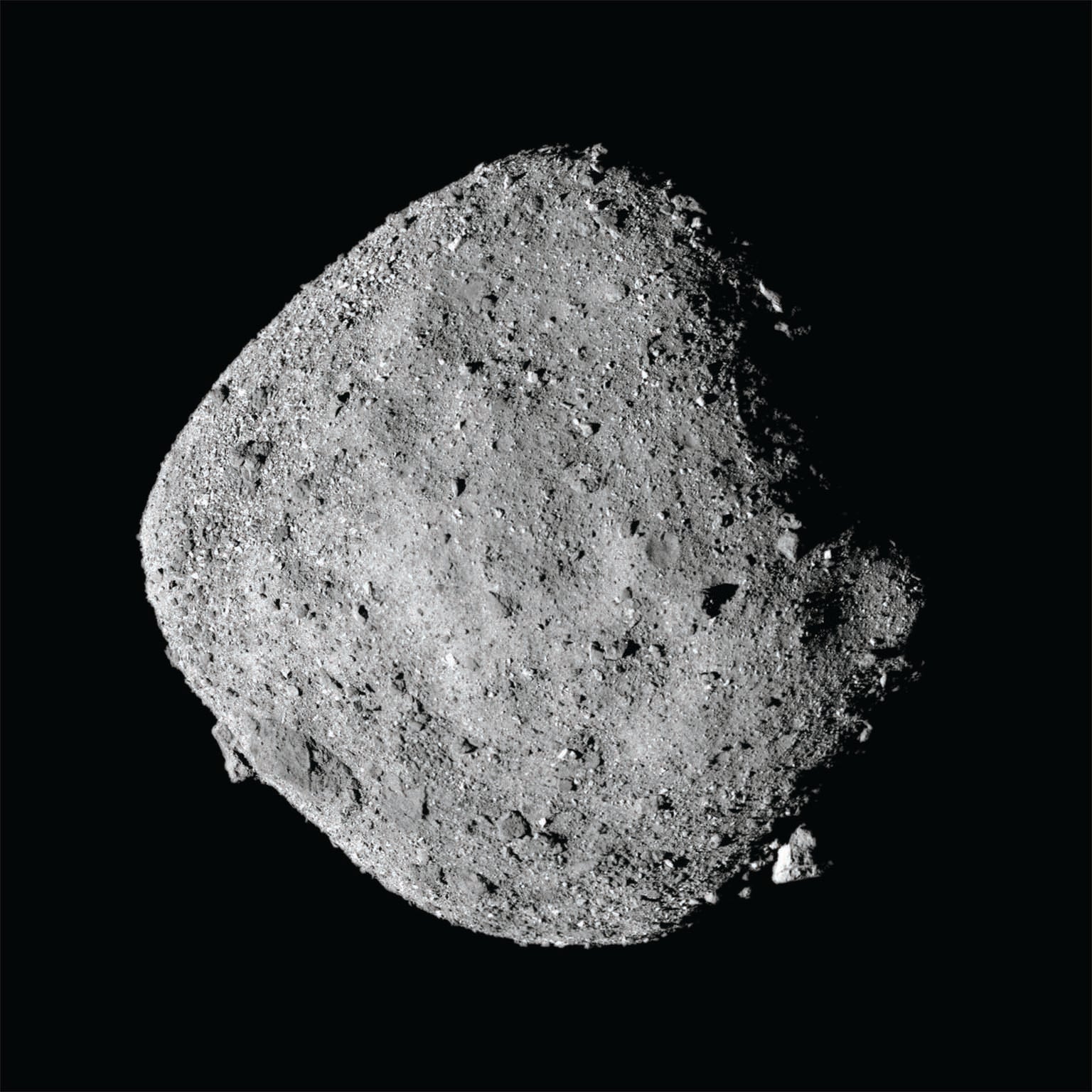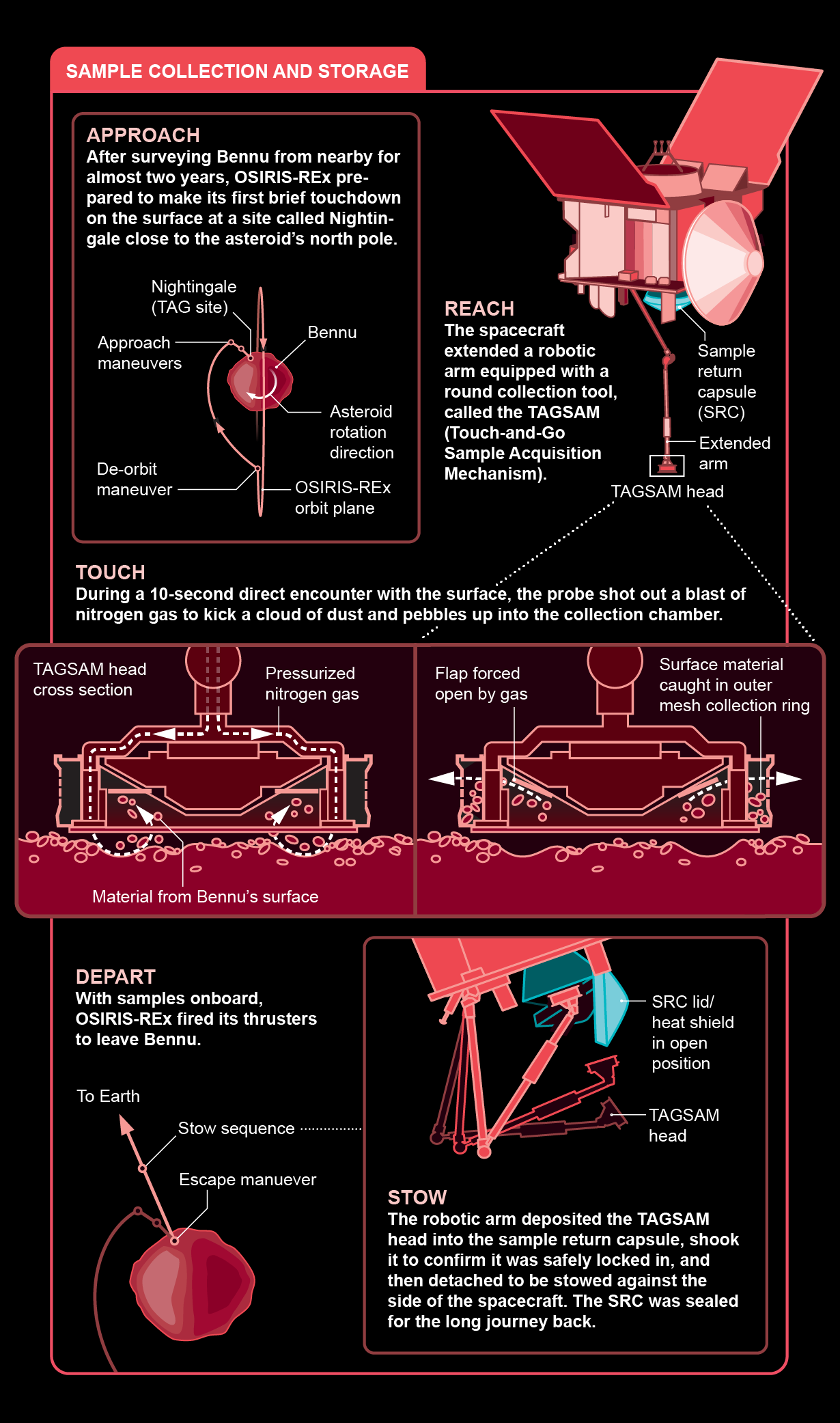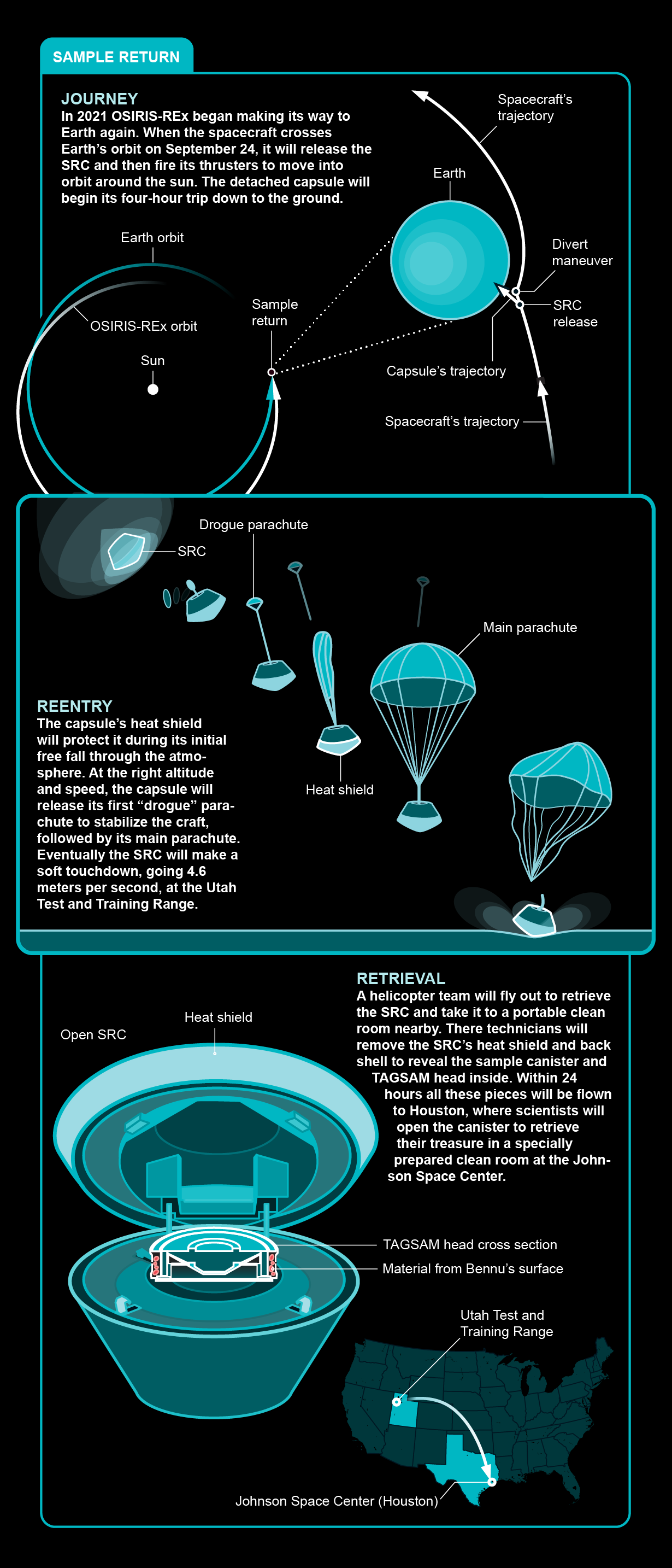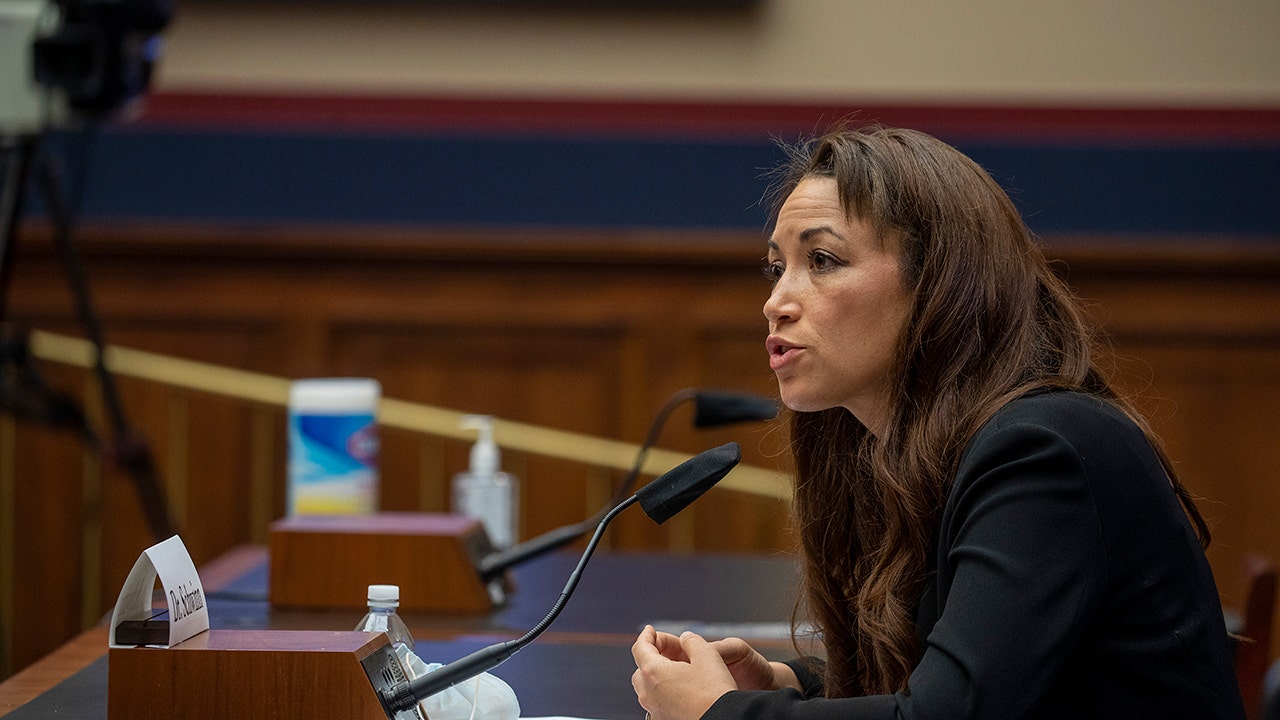What would it be like to hold a piece of outer space in your hand? Some lucky scientists will find out soon when NASA’s OSIRIS-REx spacecraft (shorthand for Origins, Spectral Interpretation, Resource Identification, Security-Regolith Explorer) returns from its seven-year mission. The probe will drop off a canister holding about a cup of pebbles and dust from the surface of the near-Earth asteroid Bennu. “Bennu is a time capsule of the early solar system, and we’re cracking it open,” says Amy Hofmann, an isotope geochemist at NASA’s Jet Propulsion Laboratory, who is a co-investigator on the mission. “We get to be the first people to see what’s in there. I’m getting goose bumps talking about this.”
Hofmann is one of around 200 scientists who will receive portions of the cargo OSIRIS-REx brings back. On September 24 the probe is set to release its sample return capsule, which will barrel through Earth’s atmosphere and make a parachute landing at the Department of Defense’s Utah Test and Training Range. If all goes well, recovery teams will helicopter it to a portable clean room to remove its heat shield and back shell and then fly it to a specially prepared facility at the Johnson Space Center in Houston. Scientists there will carefully open the inner container, handling it inside a glove box to keep out all contaminants, to retrieve some of the only pristine primordial bits of asteroid ever to reach Earth’s surface. (Meteorites are great, too, but their unprotected burn through our atmosphere alters them.)
The samples will reveal the state of the solar system when it was first forming, including which amino acids and other chemical compounds important for biology were present. “The ‘O’ in ‘OSIRIS-REx’ is really for the origin of life,” says Dante S. Lauretta of the University of Arizona, the mission’s principal investigator. “We want to understand the role that these carbon-rich asteroids played in delivering the precursors of life to Earth.”
OSIRIS-REx launched in 2016 and arrived at Bennu in 2018. It spent two years near the space rock, making measurements with its onboard cameras, spectrometers, and other instruments. Those scans revealed a lot about Bennu, including that it’s more like a pile of loosely bound rubble than a solid object and that it holds water-bearing minerals. But the real payoff will be the samples. “We have access to the absolute state-of-the-art technology here on Earth,” says co-investigator Michelle Thompson, a planetary scientist at Purdue University. “Having time, having this huge team and the ability to do coordinated analyses, to look at the same sample with multiple different techniques—there’s really nothing that can replace that. Sample return is a cornerstone of planetary science.”
In October 2020 the spacecraft made a close approach to the asteroid, briefly touching the surface with its Touch-and-Go Sample Acquisition Mechanism (TAGSAM), a robotic arm that fired a burst of nitrogen gas to stir up dust and rock, which it then funneled into its collector head. “It looks like an air filter, except we brought the air,” Lauretta says. Photographs taken during the collection process suggest the mission scooped up plenty of material. Some extra bits of sample even got stuck to the outside of the TAGSAM.

After scientists open up the TAGSAM back on Earth, a quarter of its haul will go to the OSIRIS-REx team, who will disperse it from the Johnson Space Center to laboratories around the world. Four percent of the sample will go to Canada, a contributor to the mission, and at least 0.5 percent will be sent to Japan, which carried out the two Hayabusa missions that brought back the world’s first asteroid samples in 2010 and 2020. But 70 percent of the stuff returned will remain untouched by anyone, at least for now. “Just like with Apollo, we want to preserve the vast majority of the samples for future scientists,” says University of Arizona planetary scientist Andrew Ryan, leader of the OSIRIS-REx Sample Physical and Thermal Analysis Working Group. “We’ll have new questions, there will be future tools, and we want to make sure we haven’t burned through the whole sample.”
Even the first scientific findings should significantly expand our knowledge of asteroids like Bennu. Ryan’s team will measure how much heat the material conducts, how much space there is between particles in each grain, and how strong the force is that holds the pieces together. Comparing their findings with estimates researchers made when the spacecraft was orbiting Bennu will help them better characterize other asteroids from remote measurements—a potentially crucial ability if we need to deflect an Earth-bound rock in the future.
Hofmann will use a special kind of mass spectrometer called an Orbitrap to identify specific organic molecules with different isotopic compositions within her samples and compare their amounts. Measuring the extent to which multiple carbon 13 atoms (a rare, stable form of carbon with an extra neutron) replace carbon 12 (the most common form of carbon) in a particular molecule, for instance, can tell researchers about the temperature when the compound formed. “These measurements weren’t even possible when OSIRIS-REx was first proposed,” Hofmann says. “It’s forensics for planetary science.”
Thompson will use electron microscopes to study how Bennu has been weathered over time by impacts from other space rocks and by energetic particles streaming off the sun. These measurements, combined with the findings of other experiments planned for the samples, aim to provide a comprehensive picture of the state of our early solar system and how it became what it is today. “The questions we’re going to answer are extremely diverse,” she says. “[They cover] everything from understanding and characterizing the building blocks of the solar system to looking at the physical characteristics of the material. We are going to come out of this mission with a totally revolutionized understanding of these types of bodies. Everyone should be very excited.”
.png)



























































